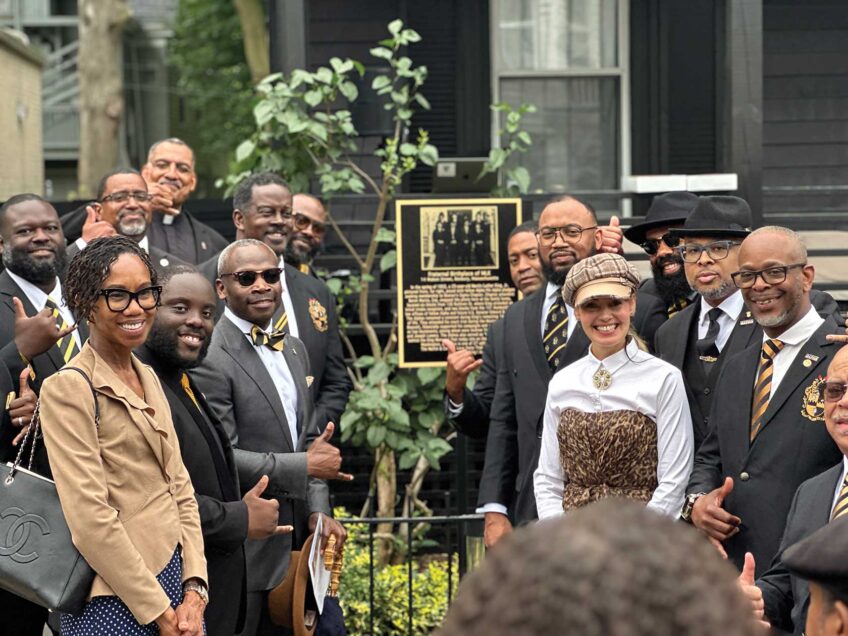With a pilot program announced last week, dreams of a higher education attainable by anyone with wit and a work ethic, but not necessarily wealth, seemed to come one step closer to realization. Governor Charlie Baker and Mayor Martin Walsh launched The Boston Bridge, a new collaboration intended to expand access in Boston to public higher ed.
The program waives tuition and mandatory fees for eligible students.
Trinh Nguyen, director of the Office of Workforce Development, told the Banner that the program’s eligibility restrictions are there to target the students who can be most effectively supported toward a bachelor’s degree, although others say it is too limited to make a dent in the level of need.
“It’s not just about enrollment, but also about completion,” Nguyen said. “As of now, we want to make sure we are focused enough to be successful.”
Representatives of Public Higher Education Network of Massachusetts (PHENOM) say the initiative serves too restricted a pool of students and imposes timeline requirements that may be challenging.
“[The Boston Bridge] makes for a great photo op, but does little to address the crisis of high costs and massive debts facing students and working families at all 29 public colleges and universities in Massachusetts,” states a PHENOM press release.
Education is on the radar as Democrats gear up for a 2018 challenge to incumbent Republican Governor Charlie Baker. Democratic gubernatorial challenger Setti Warren has proposed universal free public higher ed (paid for in part by tax hikes) and challenger Jay Gonzalez counts statewide access to affordable early education as his top priority. Challenger Bob Massie has said student debt is a notable problem and that public education should be expanded.
On the Web
Boston Bridge: http://bostonpubl…
The Boston Bridge eligibility
Zac Bears, PHENOM executive director, said that publicity around The Boston Bridge gives students the false impression that most of them will be able to get a free path to a higher degree.
“In reality, this is a very small program,” Bears said.
The Boston Bridge is available to students who live in Boston and are graduating from a Boston district, charter or parochial high school and also qualify for a Pell Grant. Households making up to $50,000 are eligible for the Pell Grant, according to Scholarships.com.
Students must then attend a two-year’s associate program (paid for under the city’s current Tuition Free Community College program), complete that degree within 2.5 years, and then transfer to a public college or university. The students then must complete a bachelor’s degree (funded by The Boston Bridge) within two years in their choice of one of the sixteen majors included under the Mass Transfer Associate-to-Bachelor’s pathway program. They must have a 2.0 high school GPA and maintain a 3.0 GPA during their higher education experience.
For their major, students currently may choose biology, chemistry, economics, history, political science, psychology, business, communication and media studies, computer science, criminal justice, early childhood education, English, liberal arts, mathematics, sociology or STEM with a focus on natural and physical sciences. There are exceptions at a few institutions. Some of the Roxbury Community College majors not included: paralegal studies, health careers and engineering. A spokesperson for the state’s Executive Office of Education said there are intentions to expand the majors included under Mass Transfer.
“I think most people can find something they’re OK with, but I don’t think it’s the job of the people financing schools to tell students what they should study,” Bears said.
In the program’s present form, students who have taken no more than a one-year gap period post-graduation also are eligible, a move intended to put focus on students seen as most committed to degree attainment, Nguyen said. The Office of Education spokesperson’s account clashes with this slightly, as she stated that only 2017 graduates may participate in the first cohort. Regardless, the restriction to recent high school grads disqualifies a swath of community college students. Valerie Roberson, president of Roxbury Community College, said during a January Boston Foundation panel that the average age of an RCC student is 31, and that many are single parents.
The Boston Bridge students also are required to study full time, which may be a challenge should any need to work to support their families or themselves. Students also may not need more than three remedial courses, though Nguyen said students are provided with other supports and that, later on, the program could potentially expand to allow up to five remedial courses.
“The whole goal is not to be exclusive but to provide the right pathway to young people to enroll and complete post-secondary education. We really want to hone in on what works so we can adopt those practices going forward,” Nguyen said.
The Boston Bridge builds on the Commonwealth Commitment, the state’s tuition-and-fees discount program. The Commonwealth Commitment served 80 of the approximately 190,000 students who attended state public college and universities last year, according to PHENOM. The Boston Bridge also is based on Boston’s tuition-free program, which served 50 students during the same time period. Meanwhile, Bears says that BPS graduates about 10,000 students each year. The Executive Office of Education spokesperson said that the Commonwealth Commitment is a pilot and that state officials intend to expand it.
Nguyen said she anticipates The Boston Bridge will serve about 40 students in its first cohort. The pilot will be considered successful enough to offer to a second cohort if half the students graduate, Nguyen said.
Financing
Under The Boston Bridge, students pay their own room and board, while the city and state take on the costs of tuition and mandatory fees left over after Pell Grant awards. Students also receive additional assistance with school-related expenses to the tune of 10 percent of the school’s tuition and mandatory fees cost. The program has no cap on the number of students who may participate or on city spending, Nugyen said. The city’s portion comes from general fund and linkage dollars. Her high estimate of costs is $750,000 to $800,000 to be contributed in combined city and state dollars.
Other approaches
Bears says that underlying the college affordability struggle are repeated state-level cuts to public higher ed budgets.
“The real problem is the state has cut funding by 31 percent per student since 2001,” he said.
Should budgeting priorities not be realigned, Bears promotes passage of the Finish Line Grant, which would provide one year free of tuition and fees at any state university, UMass campus or community college. To be eligible, a student would have to have completed their first year, attained a 2.0 or higher GPA and have a family income below $135,692. Students at any stage of life would be eligible.
Harris Gruman, of SEIU, is among those advocating for the Education Opportunity for All bill to create a fund aimed at supporting access to higher education and early education, which commonly are priced out of residents’ reach, he said. The fund would be supported by a 2.5 percent tax on nonprofit higher education institutions with endowments of $1 billion or more.
“We cannot significantly address [Massachusetts’ extreme wealth gap] unless we also tap into our elite nonprofits, who are really our biggest concentration of tax-exempt wealth,” Gruman said. “They’re like our Cayman Islands here. … They’re good institutions but they’ve become islands of privilege removed from the whole community.”
Wealthy colleges and universities have the same tax-exempt status of nonprofits with shoestring budgets and typically use interest off of invested endowments to help fund their operations. Gruman said the proposed tax would only cut into the investment. Affected institutions include Harvard, MIT, Tufts, Smith and others.
This is not the first time the taxation idea has been explored. In Feb. 2016, the president of Harvard University wrote to the U.S. Congress defending its tax-exempt status as “critical to Harvard’s success and excellence,” and something that encourages philanthropy, provides operational and research funding not fully supplied by other sources and serves as a vehicle for donors to make their wishes known. At the time, Harvard had an endowment of approximately $37.6 billion, while the state’s proposed 2017 budget was only slightly higher, at $39.6 billion.
Gruman estimates the tax could generate more than $1 billion annually. The fund’s managing committee would include representatives from government as well as from the affected institutions. Currently the bill is at the State House, and recently was heard by the Joint Committee on Revenue.






